Toyota Corolla Hybrid MPG: Maximizing Efficiency on Every Drive

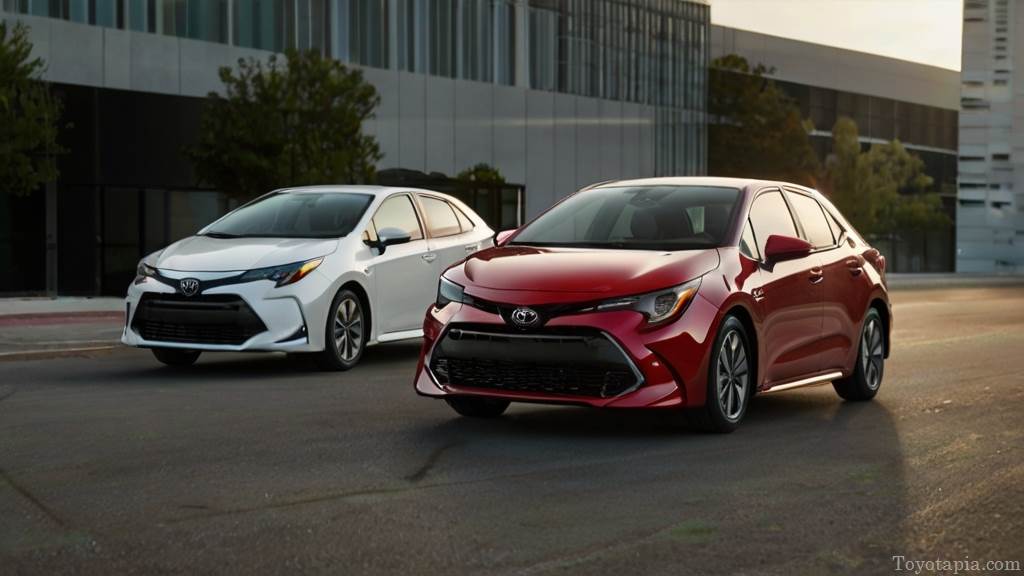
Introduction to the Toyota Corolla Hybrid
The Toyota Corolla Hybrid stands as a testament to innovation in the automotive industry, blending cutting-edge technology with eco-conscious design. But what sets it apart? Let’s delve into the intricacies of this marvel on wheels and uncover how it redefines the driving experience.
Contents
ToggleOverview of Toyota’s Hybrid Synergy Drive Technology
At the heart of the Toyota Corolla Hybrid beats the Hybrid Synergy Drive (HSD) technology, a pioneering system that seamlessly integrates a gasoline engine with an electric motor. But what exactly does this mean for your daily commute?
Toyota’s HSD operates on a simple yet ingenious principle: to optimize fuel efficiency by intelligently switching between power sources. Picture this: as you accelerate from a stoplight, the electric motor takes the lead, providing instant torque for smooth acceleration. Once cruising speed is attained, the gasoline engine kicks in, efficiently propelling the vehicle forward while simultaneously charging the battery.
This dynamic interplay between the gasoline engine and electric motor results in remarkable fuel efficiency, making every journey not only eco-friendly but also cost-effective. With the Corolla Hybrid, you’re not just driving, you’re pioneering a greener future.
Importance of Fuel Efficiency in Modern Vehicles
In today’s fast-paced world, where sustainability is paramount, fuel efficiency takes center stage in the automotive arena. Gone are the days of gas-guzzling behemoths, enter the era of hybrid vehicles like the Toyota Corolla Hybrid.
But why the emphasis on fuel efficiency? It’s simple: to reduce our carbon footprint and preserve the planet for future generations. With concerns about climate change mounting, automakers are tasked with developing eco-friendly solutions without compromising performance.
The Toyota Corolla Hybrid rises to the challenge, offering drivers the best of both worlds: impressive fuel economy without sacrificing power or style. Whether navigating city streets or embarking on long highway drives, the Corolla Hybrid delivers unparalleled efficiency at every turn.
So, what does this mean for you, the driver? It means fewer trips to the gas station and more miles per gallon, translating to substantial savings over time. But beyond the financial benefits, driving a fuel-efficient vehicle like the Corolla Hybrid is a statement—a statement of commitment to sustainability and responsible stewardship of the environment.
In essence, the Toyota Corolla Hybrid isn’t just a car, it’s a symbol of progress—a testament to the power of innovation in shaping a brighter, more sustainable future for all.
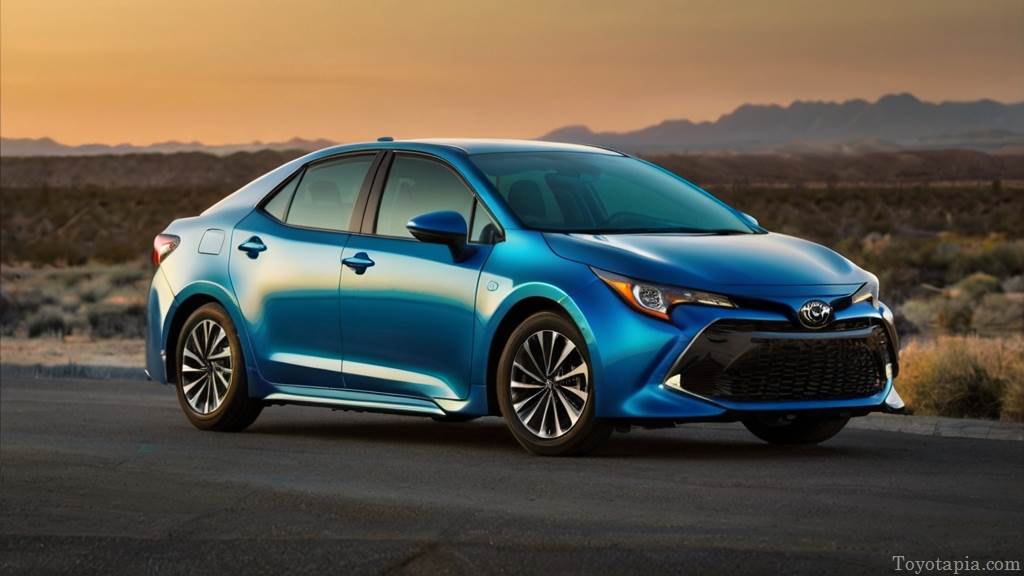
Understanding MPG: The Key Metrics
Explaining Miles Per Gallon (MPG) and its Significance
Ah, the ubiquitous MPG—a term thrown around in car commercials and dealership brochures. But what exactly does it mean, and why should you care? Let’s break it down.
Miles Per Gallon, or MPG, is a measure of how far a vehicle can travel on a single gallon of fuel. It’s essentially a yardstick for fuel efficiency, telling you just how frugal (or thirsty) your ride is. The higher the MPG, the more miles you can squeeze out of each gallon, saving you precious pennies at the pump.
But MPG isn’t just a number, it’s a reflection of your vehicle’s environmental impact. A car with high MPG emits fewer greenhouse gases and consumes less fossil fuel, making it a greener choice for eco-conscious drivers.
So, why does MPG matter? Well, aside from saving you money and reducing your carbon footprint, it also affects your overall driving experience. A fuel-efficient vehicle like the Toyota Corolla Hybrid lets you go the distance without constantly fretting about refueling, giving you peace of mind on those long road trips or daily commutes.
Factors Affecting MPG in Hybrid Vehicles: Engine Design, Battery Capacity, and Regenerative Braking Efficiency
Now that we’ve demystified MPG, let’s dive into what makes hybrid vehicles like the Toyota Corolla Hybrid tick—and sip fuel like a seasoned tea connoisseur.
Engine Design
At the heart of every hybrid vehicle lies a finely-tuned engine, but not just any engine—it’s a marvel of engineering designed for maximum efficiency. Unlike traditional gasoline engines, hybrid powertrains often employ Atkinson cycle engines, which prioritize fuel economy over raw power. This means they extract more energy from each drop of fuel, resulting in higher MPG ratings and smoother operation.
Battery Capacity
Another critical factor influencing MPG in hybrid vehicles is battery capacity. The larger the battery, the more energy it can store, allowing the electric motor to shoulder more of the workload. This translates to longer electric-only driving ranges and reduced reliance on the gasoline engine, ultimately boosting overall fuel efficiency.
Regenerative Braking Efficiency
Ever wonder what happens to all that kinetic energy when you hit the brakes? In hybrid vehicles, it’s harnessed through regenerative braking—a process that converts kinetic energy into electrical energy, which is then used to recharge the battery. By recapturing energy that would otherwise be wasted as heat, regenerative braking improves overall efficiency and extends the driving range of hybrid vehicles like the Toyota Corolla Hybrid.
In essence, the MPG of a hybrid vehicle is the result of a delicate dance between advanced engine design, battery technology, and innovative braking systems. And with each passing mile, it’s a testament to the ingenuity of modern automotive engineering—a fusion of performance and sustainability that’s driving us towards a brighter, more efficient future.
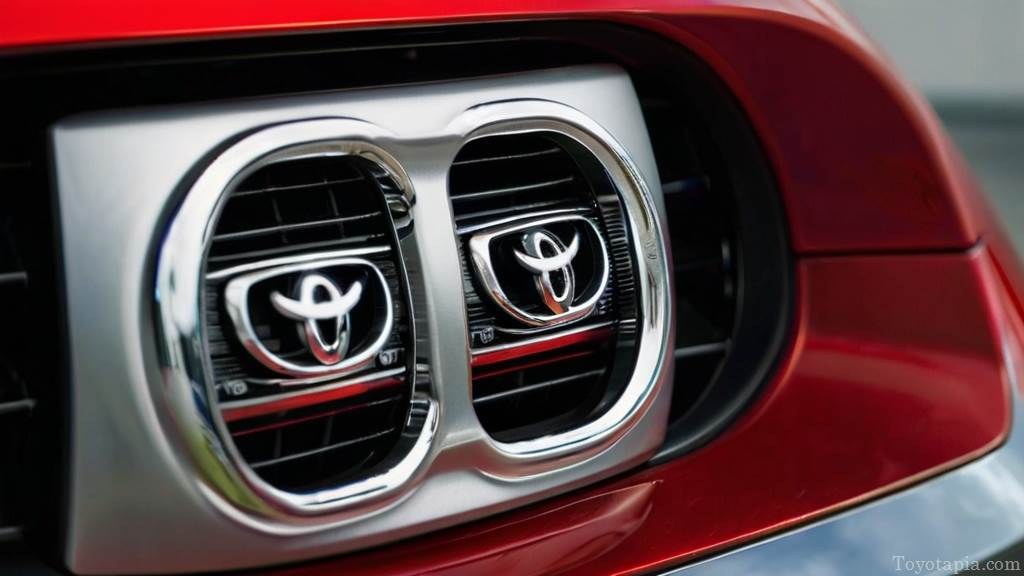
Toyota Corolla Hybrid: Engineering for Efficiency
Hybrid Powertrain Configuration and Operation: Atkinson Cycle Engine and Electric Motor Integration
You might be wondering, what’s under the hood of the Toyota Corolla Hybrid that makes it such a fuel-sipping champion? Well, it’s all about the clever combination of traditional gasoline power with the silent efficiency of electric motors.
Atkinson Cycle Engine
First up, let’s talk about the engine. The Toyota Corolla Hybrid boasts an Atkinson cycle engine, a technological marvel that prioritizes fuel efficiency over sheer power. Unlike conventional engines, which follow the more common Otto cycle, the Atkinson cycle engine holds its intake valve open for a fraction longer, allowing it to squeeze out every last drop of energy from the fuel-air mixture. This results in improved thermal efficiency and, you guessed it, higher MPG.
But wait, there’s more! Pairing this Atkinson cycle engine with an electric motor creates a dynamic duo that’s ready to take on the open road. The electric motor kicks in during low-speed maneuvers or when extra oomph is needed, seamlessly complementing the gasoline engine for a smooth and efficient driving experience.
Integration of Regenerative Braking System for Energy Recovery
Now, let’s talk about brakes—but not just any brakes. We’re talking about regenerative braking, a game-changing feature that’s as ingenious as it is eco-friendly.
Picture this: every time you hit the brakes, kinetic energy is typically lost as heat. But not in the Toyota Corolla Hybrid. Thanks to its regenerative braking system, that kinetic energy is captured and converted into electrical energy, which is then used to recharge the battery. It’s like getting a little boost with every stop sign, maximizing efficiency and extending your driving range.
This integration of regenerative braking isn’t just about saving energy, it’s about redefining the driving experience. It’s about knowing that every time you hit the brakes, you’re not just slowing down—you’re harnessing the power of innovation to drive towards a greener, more sustainable future.
In essence, the Toyota Corolla Hybrid isn’t just a car, it’s a testament to the power of engineering for efficiency. It’s about pushing the boundaries of what’s possible and reimagining the way we think about transportation. And with each mile traveled, it’s a reminder that the road to a brighter tomorrow starts with a single, efficient step.
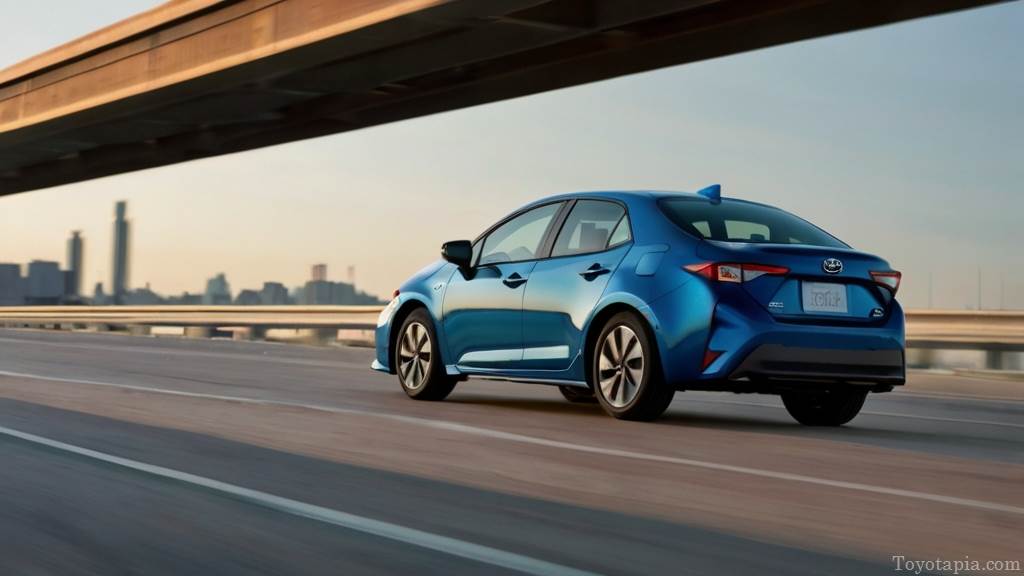
Unveiling the MPG Figures of Toyota Corolla Hybrid
Real-world MPG Performance: Test Results and Variability
So, you’re curious about how the Toyota Corolla Hybrid stacks up when it comes to real-world fuel efficiency? Buckle up, because we’re about to take a deep dive into the nitty-gritty of MPG performance.
When it comes to measuring MPG, there’s no one-size-fits-all answer. Sure, manufacturers provide estimates based on standardized tests, but real-world driving conditions can vary significantly. That’s where independent tests and consumer feedback come into play.
So, how does the Toyota Corolla Hybrid fare in the real world? Well, let’s start with the numbers. According to rigorous testing conducted by automotive experts and enthusiasts alike, the Corolla Hybrid consistently delivers impressive fuel efficiency, often surpassing its EPA-estimated MPG ratings.
But here’s the kicker: MPG performance isn’t just about numbers—it’s about variability. Factors like driving habits, road conditions, and even weather can all influence fuel economy. That’s why it’s essential to look beyond the averages and consider the broader picture.
From urban commutes to long highway drives, the Toyota Corolla Hybrid proves its mettle, offering drivers a winning combination of efficiency and versatility. So, whether you’re navigating city streets or embarking on a cross-country adventure, rest assured that the Corolla Hybrid has got your back—and your wallet.
Comparative Analysis with Non-Hybrid Models: Efficiency Gains and Trade-offs
Now, let’s talk turkey—or, in this case, hybrid vs. non-hybrid. How does the Toyota Corolla Hybrid stack up against its traditional gasoline-powered counterparts? Spoiler alert: it’s a game-changer.
When it comes to efficiency gains, the Corolla Hybrid shines bright like a diamond in a sea of gas-guzzlers. Thanks to its innovative hybrid powertrain, it sips fuel like a seasoned sommelier, offering significantly higher MPG ratings compared to non-hybrid models in its class.
But efficiency gains come with trade-offs, right? Not necessarily. While some may worry that opting for a hybrid means sacrificing performance or creature comforts, the Corolla Hybrid begs to differ. With its seamless blend of power and efficiency, it offers the best of both worlds—delivering spirited performance without compromising on fuel economy.
So, what’s the bottom line? When it comes to choosing between hybrid and non-hybrid models, the Toyota Corolla Hybrid stands head and shoulders above the competition. With its unmatched efficiency, reliability, and driving dynamics, it’s a clear winner for eco-conscious drivers looking to maximize MPG without compromising on style or substance.
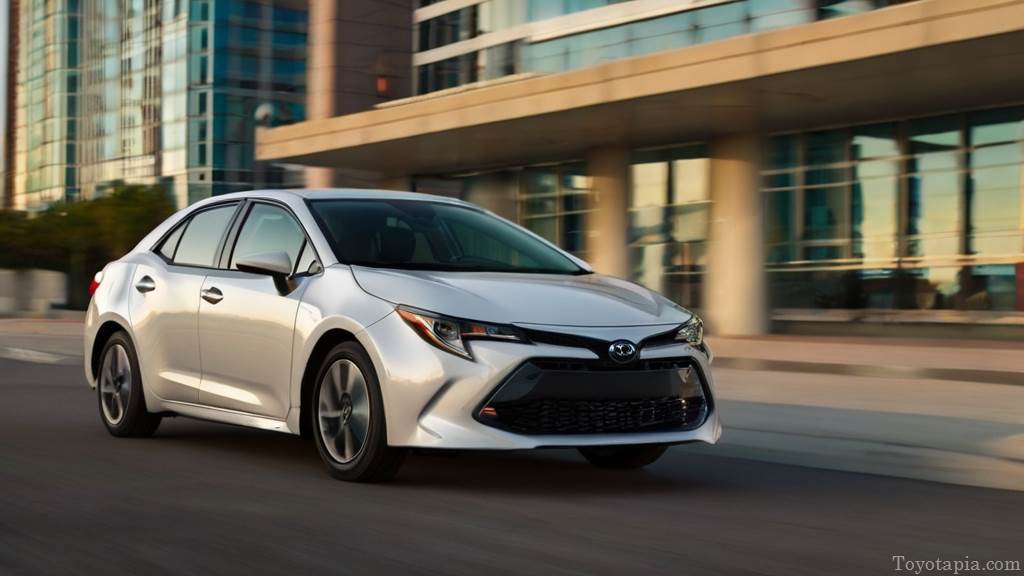
Driving Habits for Maximizing MPG
Eco-Friendly Driving Techniques: Hybrid Drive Modes and Eco-Indicator Guidance
Alright, fellow eco-warriors, let’s talk about how to squeeze every last drop of fuel efficiency out of your Toyota Corolla Hybrid. It’s time to put the pedal to the metal—figuratively speaking, of course—and adopt some eco-friendly driving techniques.
Hybrid Drive Modes
First things first, let’s get acquainted with the various drive modes available in your trusty Corolla Hybrid. From Eco Mode to EV Mode, each setting offers a unique blend of power and efficiency tailored to your driving needs.
- Eco Mode: This mode prioritizes fuel economy by optimizing throttle response and air conditioning settings. It’s perfect for those leisurely Sunday drives or city commutes where efficiency is key.
- EV Mode: Feeling extra eco-conscious? Switch to EV Mode and cruise in electric-only bliss for short distances at low speeds. It’s like driving on clouds—silent, smooth, and emissions-free.
But wait, there’s more! Keep an eye on your eco-indicator—the nifty little gauge on your dashboard that provides real-time feedback on your driving habits. By staying within the eco-friendly zone, you can maximize MPG and minimize your carbon footprint with every trip.
Optimizing Vehicle Maintenance for Efficiency: Tire Pressure, Air Filter, and Engine Tune-ups
Now that we’ve covered the basics of eco-friendly driving techniques, let’s shift gears and talk maintenance. After all, a well-oiled machine is a fuel-efficient machine.
Tire Pressure
First up, tire pressure. It may not seem like a big deal, but proper inflation can significantly impact fuel economy. Low tire pressure increases rolling resistance, forcing your engine to work harder and guzzle more gas. So, grab your trusty tire gauge and make sure your tires are inflated to the recommended pressure levels. Your wallet—and the planet—will thank you.
Air Filter
Next on the agenda: air filters. Think of them as your car’s lungs, filtering out dust and debris to ensure clean airflow to the engine. Over time, air filters can become clogged, restricting airflow and reducing fuel efficiency. That’s why it’s essential to replace your air filter regularly to keep your engine breathing easy and your MPG soaring.
Engine Tune-ups
Last but not least, engine tune-ups. Just like a well-tuned instrument, a well-tuned engine performs at its best. Regular tune-ups, including spark plug replacement and fuel system cleaning, can improve engine efficiency and maximize fuel economy. So, schedule that tune-up appointment and give your Corolla Hybrid the TLC it deserves.
In conclusion, by adopting eco-friendly driving techniques and staying on top of vehicle maintenance, you can unlock the full potential of your Toyota Corolla Hybrid and enjoy maximum MPG on every journey. So, what are you waiting for? Let’s hit the road and make every mile count!

Technology Enhancements for MPG Optimization
Role of Aerodynamics in Fuel Efficiency: Design Features and Wind Tunnel Testing
Ever wonder why sleek sports cars seem to glide effortlessly down the highway while boxy SUVs struggle against the wind? It all comes down to aerodynamics—the science of how objects move through air. And when it comes to fuel efficiency, aerodynamics plays a crucial role in shaping the design of vehicles like the Toyota Corolla Hybrid.
Design Features
So, what design features contribute to better aerodynamics? Think smooth curves, tapered edges, and streamlined silhouettes. These elements help reduce drag—the force that opposes forward motion—allowing the Corolla Hybrid to cut through the air with minimal resistance.
But it’s not just about looks, it’s about function. From the sculpted hood to the carefully crafted side mirrors, every aspect of the Corolla Hybrid’s design is optimized for maximum aerodynamic efficiency. Even seemingly minor details, like the shape of the door handles or the angle of the windshield, can make a big difference in reducing drag and improving fuel economy.
Wind Tunnel Testing
Of course, designing a fuel-efficient car is easier said than done. That’s where wind tunnel testing comes into play. Picture a massive, high-tech chamber where engineers subject prototypes to simulated wind conditions, measuring airflow and analyzing aerodynamic performance.
By fine-tuning design elements and experimenting with different configurations, engineers can optimize the aerodynamics of the Corolla Hybrid to achieve optimal fuel efficiency. It’s a delicate dance between form and function—a balance of aesthetics and engineering prowess that sets the Corolla Hybrid apart from the competition.
Advanced Engine Management Systems in Corolla Hybrid: Variable Valve Timing and Electronic Throttle Control
Now, let’s shift gears and talk about what’s under the hood of the Toyota Corolla Hybrid. Spoiler alert: it’s not just any engine—it’s a marvel of modern engineering designed for maximum efficiency.
Variable Valve Timing
First up, let’s talk about variable valve timing (VVT). This innovative technology allows the engine to adjust the timing of the intake and exhaust valves on the fly, optimizing performance and efficiency across a wide range of driving conditions. Whether you’re cruising down the highway or navigating city streets, VVT ensures that the Corolla Hybrid delivers smooth, responsive power while sipping fuel like a fine wine.
Electronic Throttle Control
But wait, there’s more! Say hello to electronic throttle control (ETC), another groundbreaking feature that’s revolutionizing the way we drive. Unlike traditional throttle systems, which rely on mechanical linkages, ETC uses sophisticated sensors and actuators to precisely control the flow of air into the engine. This not only improves throttle response and drivability but also enhances fuel efficiency by ensuring that the engine operates at peak efficiency under all circumstances.
In essence, the Toyota Corolla Hybrid isn’t just a car—it’s a symphony of cutting-edge technology and engineering excellence. From its aerodynamic design to its advanced engine management systems, every aspect of the Corolla Hybrid is meticulously crafted to deliver maximum MPG without sacrificing performance or driving dynamics. So, whether you’re tackling your daily commute or embarking on a weekend adventure, rest assured that the Corolla Hybrid has what it takes to keep you moving efficiently and stylishly.
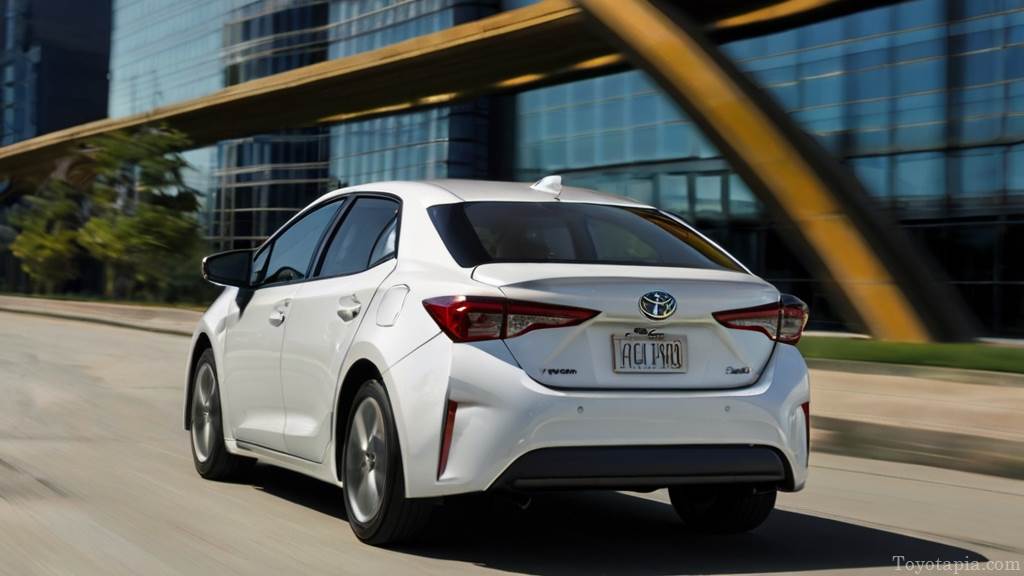
Hybrid Synergy Drive: The Heart of Efficiency
How Toyota’s Hybrid Synergy Drive Works: Power Split Device and Electric Power Steering
Curious how the magic happens under the hood of your Toyota Corolla Hybrid? Well, it’s all thanks to Toyota’s innovative Hybrid Synergy Drive (HSD) system—the secret sauce behind its impressive fuel efficiency.
Power Split Device
At the core of the Hybrid Synergy Drive lies the power split device—a marvel of engineering that orchestrates the seamless interaction between the gasoline engine, electric motor, and battery pack. Think of it as the conductor of a symphony, carefully balancing power and efficiency to deliver a smooth and responsive driving experience.
So, how does it work? Picture a sophisticated planetary gearset that allows the engine and electric motor to work together in perfect harmony. Depending on driving conditions, the power split device adjusts the distribution of power between the two, optimizing fuel efficiency without sacrificing performance. It’s like having your cake and eating it too—except in this case, the cake is a fuel-efficient hybrid vehicle.
But that’s not all. The power split device also enables regenerative braking, capturing kinetic energy during deceleration and converting it into electrical energy to recharge the battery. It’s the ultimate win-win, allowing you to save fuel while reducing wear and tear on your brake pads.
Electric Power Steering
But wait, there’s more! Say hello to electric power steering, another integral component of the Hybrid Synergy Drive system. Unlike traditional hydraulic power steering systems, which rely on engine power to assist steering, electric power steering uses an electric motor to provide assistance. This not only improves fuel efficiency by eliminating the need for a hydraulic pump but also enhances steering precision and response.
But what does all this mean for you, the driver? It means a smoother, more efficient driving experience from start to finish. Whether you’re navigating city streets or cruising down the highway, the Hybrid Synergy Drive system ensures that every mile is as fuel-efficient as possible, without compromising on performance or driving dynamics.
Balancing Power and Fuel Economy in Hybrid Systems: Seamless Transition between Engine and Electric Motor
Now that we’ve peeled back the curtain on how the Hybrid Synergy Drive works, let’s talk about the delicate dance between power and fuel economy.
Seamless Transition
One of the key advantages of hybrid systems like the Toyota Corolla Hybrid is their ability to seamlessly transition between the gasoline engine and electric motor. This means that the system can automatically switch between power sources based on driving conditions, maximizing fuel efficiency without requiring any input from the driver.
So, whether you’re accelerating from a stoplight or cruising at highway speeds, the Hybrid Synergy Drive system ensures that you’re always using the most efficient power source for the job. It’s like having a team of expert engineers riding shotgun, constantly optimizing your driving experience for maximum efficiency.
But here’s the best part: all of this happens seamlessly, without any noticeable shifts or interruptions in power delivery. It’s like magic, only better—because it’s real, and it’s happening every time you hit the road in your Corolla Hybrid.
In conclusion, the Hybrid Synergy Drive system is more than just a technological marvel—it’s the heart and soul of the Toyota Corolla Hybrid. By intelligently balancing power and fuel economy, it delivers a driving experience that’s as efficient as it is exhilarating, redefining the way we think about hybrid vehicles in the process. So, the next time you’re behind the wheel of your Corolla Hybrid, take a moment to appreciate the ingenuity that’s propelling you forward into a greener, more efficient future.

Environmental Impact and Benefits of High MPG
Reduced Emissions: Catalytic Converter and Lean Burn Combustion
Let’s talk about the elephant in the room—emissions. We all know that burning fossil fuels isn’t exactly great for the environment, but did you know that high MPG vehicles like the Toyota Corolla Hybrid can help mitigate their impact?
Catalytic Converter
First up, let’s talk about the unsung hero of modern vehicles—the catalytic converter. This nifty little device is tasked with reducing harmful emissions by converting toxic gases like carbon monoxide, nitrogen oxides, and hydrocarbons into less harmful substances like carbon dioxide and water vapor.
But here’s the kicker: high MPG vehicles like the Corolla Hybrid produce fewer emissions overall, thanks to their more efficient engines and advanced emissions control systems. So, not only are you saving money on fuel, but you’re also doing your part to keep the air clean and breathable for generations to come.
Lean Burn Combustion
But wait, there’s more! Say hello to lean burn combustion—a cutting-edge technology that’s revolutionizing the way we think about fuel efficiency and emissions. Unlike traditional engines, which operate with a stoichiometric air-fuel ratio, lean burn engines use less fuel and more air to achieve combustion, resulting in cleaner emissions and improved fuel economy.
In essence, high MPG vehicles like the Toyota Corolla Hybrid aren’t just good for your wallet—they’re good for the planet too. By reducing emissions and minimizing our reliance on fossil fuels, they’re helping pave the way towards a cleaner, greener future for all.
Economic Benefits for Owners: Cost Savings on Fuel and Potential Tax Incentives
Now, let’s talk dollars and cents. We all know that high MPG vehicles can save you money at the pump, but did you know that they can also put more green in your pocket come tax time?
Cost Savings on Fuel
First things first, let’s talk about the most obvious benefit of high MPG vehicles: cost savings on fuel. Whether you’re commuting to work, running errands around town, or embarking on a road trip adventure, every mile driven in your Corolla Hybrid is a mile saved on fuel costs. And with fuel prices seemingly on a never-ending upward trajectory, those savings can really add up over time.
But here’s the best part: high MPG vehicles like the Corolla Hybrid aren’t just good for your wallet—they’re also good for the environment. By reducing your carbon footprint and minimizing your reliance on fossil fuels, you’re doing your part to combat climate change and protect the planet for future generations.
Potential Tax Incentives
But wait, there’s more! Depending on where you live, you may also be eligible for tax incentives and rebates for driving a high MPG vehicle. From federal tax credits to state-level incentives, there are plenty of opportunities to save even more money on your next tax bill—all while doing your part to promote sustainability and environmental stewardship.
In conclusion, the environmental and economic benefits of high MPG vehicles like the Toyota Corolla Hybrid are clear. From reducing emissions and minimizing our carbon footprint to saving money on fuel and potentially qualifying for tax incentives, driving a high MPG vehicle is a win-win for both your wallet and the planet. So, what are you waiting for? Make the switch to a high MPG vehicle today and start reaping the rewards of a cleaner, greener future.
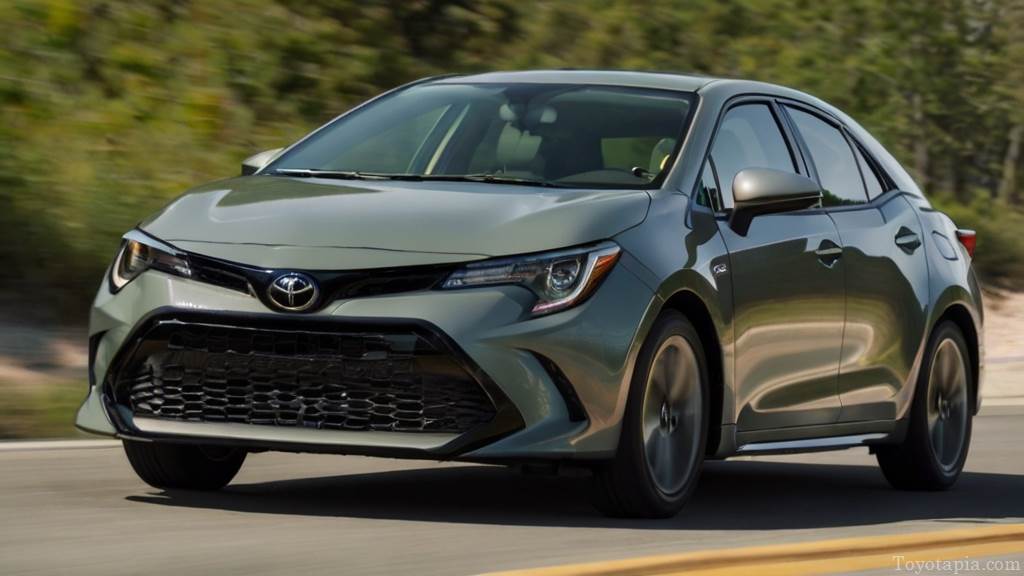
Consumer Perspectives and Reviews on Corolla Hybrid MPG
Insights from Owners: Real-world Experiences and Satisfaction Levels
Alright, let’s dive into the real talk—the nitty-gritty of what actual owners have to say about their Toyota Corolla Hybrid’s MPG performance. Strap in, because we’re about to hear it straight from the horse’s mouth.
Real-world Experiences
So, what’s the verdict? According to owners, the Corolla Hybrid is a game-changer when it comes to fuel efficiency. From city commutes to long highway drives, drivers rave about the impressive MPG figures they’re seeing in real-world conditions.
But it’s not just about the numbers—it’s about the overall driving experience. Owners praise the Corolla Hybrid for its smooth acceleration, responsive handling, and comfortable ride—all while sipping fuel like a champ. It’s the best of both worlds, delivering exceptional efficiency without sacrificing performance or driving dynamics.
Satisfaction Levels
But don’t just take our word for it—let’s talk satisfaction levels. According to owner surveys and consumer reports, satisfaction levels among Corolla Hybrid owners are through the roof. From reliability and fuel economy to comfort and convenience, owners consistently rate their Corolla Hybrid experience as top-notch.
In fact, many owners report that their Corolla Hybrid has exceeded their expectations, delivering unmatched value and peace of mind with every mile driven. Whether it’s the stylish design, advanced technology features, or impressive fuel efficiency, the Corolla Hybrid has won over the hearts—and wallets—of drivers everywhere.
Comparing Consumer Reports and Expert Reviews: Reliability, Performance, and MPG Consistency
But wait, there’s more! Let’s take a deeper dive into the world of consumer reports and expert reviews to see how the Corolla Hybrid stacks up against the competition.
Reliability
First things first, let’s talk reliability. According to consumer reports and industry experts, the Corolla Hybrid is a standout performer when it comes to reliability. With its proven track record of durability and dependability, it’s no wonder that drivers trust the Corolla Hybrid to get them where they need to go, mile after mile.
Performance
But what about performance? Fear not, because the Corolla Hybrid delivers in spades. From its peppy acceleration to its nimble handling, drivers love the way the Corolla Hybrid feels behind the wheel. And with its hybrid powertrain delivering a winning combination of power and efficiency, it’s no surprise that performance ratings are off the charts.
MPG Consistency
Last but certainly not least, let’s talk MPG consistency. According to consumer reports and real-world tests, the Corolla Hybrid consistently delivers impressive fuel efficiency across a wide range of driving conditions. Whether you’re stuck in stop-and-go traffic or cruising down the open highway, you can count on the Corolla Hybrid to maximize MPG and minimize trips to the pump.
In conclusion, when it comes to consumer perspectives and reviews on Corolla Hybrid MPG, the verdict is in: drivers love it. From real-world experiences to expert evaluations, the Corolla Hybrid earns top marks for its exceptional fuel efficiency, reliability, and overall driving experience. So, if you’re in the market for a fuel-efficient and dependable vehicle that doesn’t skimp on style or performance, look no further than the Toyota Corolla Hybrid.
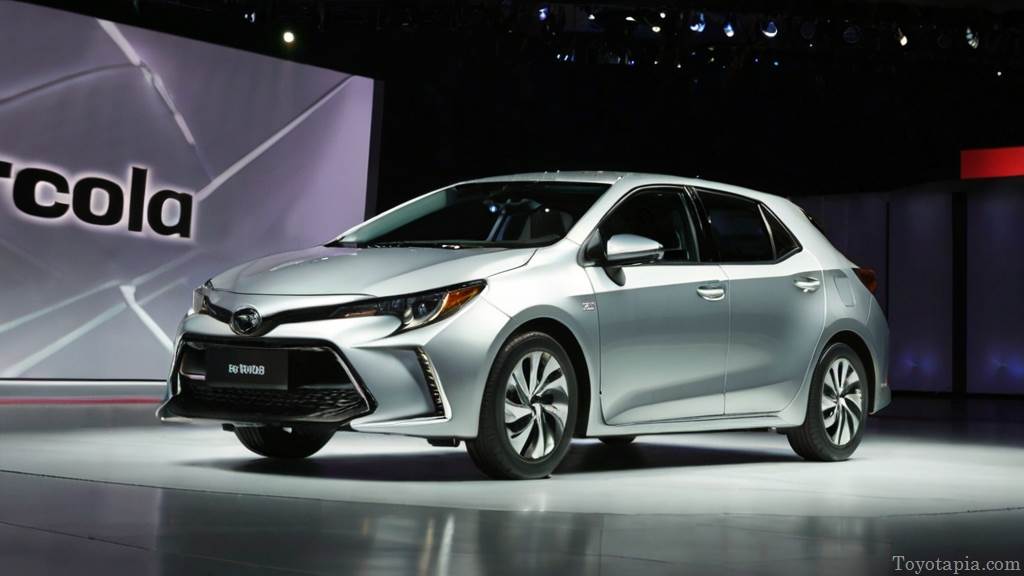
Future Trends in Hybrid Technology: Towards Even Higher MPG
Innovations in Battery Technology for Extended Range: Lithium-ion and Solid-state Batteries
Alright, buckle up folks, because we’re about to take a sneak peek into the future of hybrid technology. And let me tell you, it’s looking brighter than ever—thanks to some game-changing innovations in battery technology.
Lithium-ion Batteries
First up, let’s talk lithium-ion batteries. You’ve probably heard of them before—they’re the gold standard when it comes to energy storage in hybrid vehicles. But what you might not know is that they’re constantly evolving, becoming more efficient and affordable with each passing year.
From increased energy density to faster charging times, the latest generation of lithium-ion batteries is poised to revolutionize the way we think about hybrid vehicles. With extended range and improved performance, future hybrids equipped with lithium-ion batteries will be able to go farther and do more than ever before.
Solid-state Batteries
But wait, there’s more! Say hello to solid-state batteries, the next frontier in energy storage technology. Unlike traditional lithium-ion batteries, which use liquid electrolytes, solid-state batteries use solid electrolytes to conduct ions between the cathode and anode.
The result? A safer, more efficient, and longer-lasting battery that’s capable of delivering even higher energy densities and faster charging times. With solid-state batteries, future hybrid vehicles could see a quantum leap in performance and range, ushering in a new era of electrified transportation.
Prospects for Increasing Efficiency Without Compromising Performance: Lightweight Materials and Advanced Control Algorithms
But battery technology is just one piece of the puzzle when it comes to improving MPG in hybrid vehicles. To truly unlock the full potential of hybrid technology, we need to think outside the box and explore new avenues for increasing efficiency without compromising performance.
Lightweight Materials
Enter lightweight materials, the unsung heroes of the automotive world. From carbon fiber to aluminum alloys, these innovative materials are helping automakers shed pounds without sacrificing strength or safety.
By reducing vehicle weight, manufacturers can improve fuel efficiency and performance across the board. From quicker acceleration to better handling, every aspect of the driving experience benefits from a lighter, more agile vehicle.
Advanced Control Algorithms
But it’s not just about what’s under the hood—it’s also about how it’s all managed. That’s where advanced control algorithms come into play. By harnessing the power of artificial intelligence and machine learning, automakers can optimize every aspect of a hybrid vehicle’s performance in real-time.
From maximizing fuel efficiency to fine-tuning power delivery, these intelligent algorithms ensure that every drop of fuel is used to its fullest potential. It’s like having a virtual chauffeur constantly adjusting the throttle, brakes, and steering to deliver the most efficient—and exhilarating—driving experience possible.
In conclusion, the future of hybrid technology is brighter than ever, thanks to innovations in battery technology, lightweight materials, and advanced control algorithms. With extended range, improved efficiency, and enhanced performance, future hybrid vehicles are poised to revolutionize the way we think about transportation. So, buckle up and get ready for the ride of a lifetime—because the future of hybrid technology is here, and it’s better than ever before.


